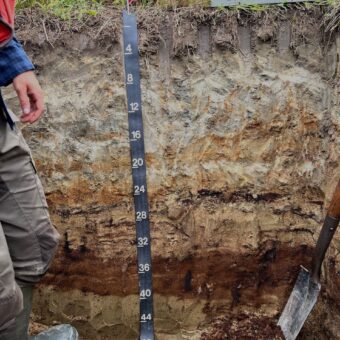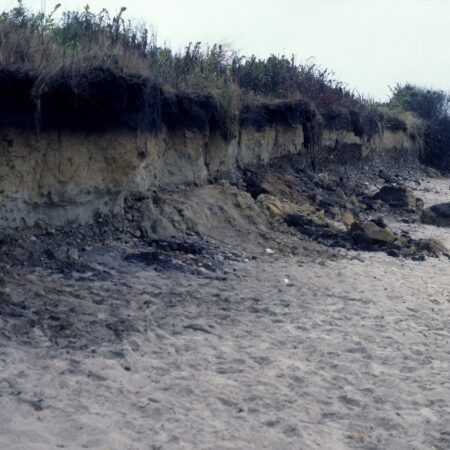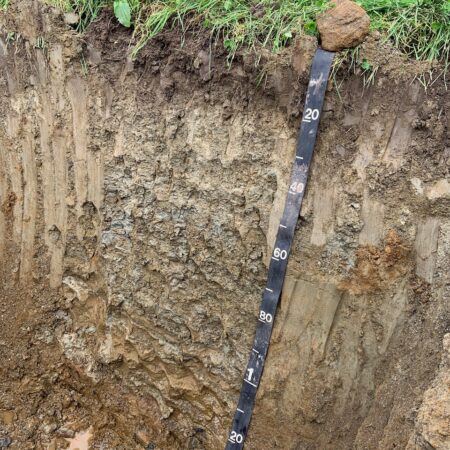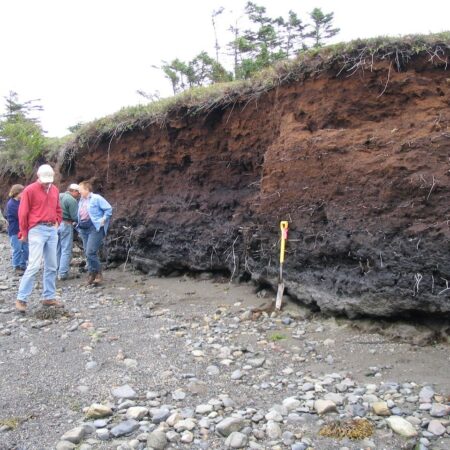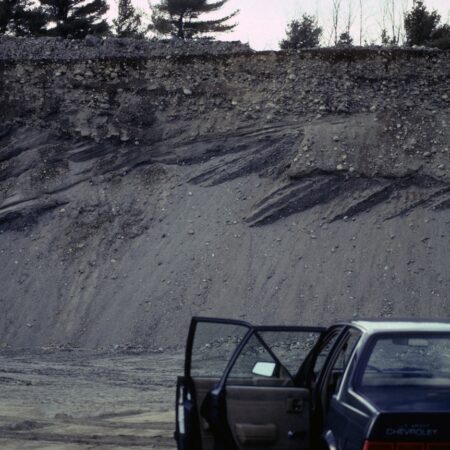Efficient use and management of Maine’s soils arises from the careful study, description, and mapping of land areas. Agricultural products, drinking water supplies, timber resources, road construction activities, waste water disposal, pollution mitigation, building sites, town planning, recreation areas, conservation lands, and untold other intricacies of life are directly linked to proper utilization of Maine’s varied soils.
The thin veneer of unconsolidated sediment overlying Maine’s bedrock was deposited beneath and at the terminus of the Laurentide ice sheet 11,000 to 15,000 years before present. These heterogeneous sediments are collectively called “parent material”. There are 5 broad classes of parent materials in Maine:
- Sand and gravel deposits
- Loose ablation till
- Dense basal till
- Marine/lake silty clay sediments
- Peat (organic) deposits
In the upper part of these parent materials, soils have slowly formed since deglaciation.
Soil Mapping
Soil Map Intensity
Different levels of soil map intensities can match particular land use objectives. For example, the U.S.D.A. Natural Resources Conservation Service county soil maps were developed at scales of 1:15,840 (1 map inch = 1,320 ft. on the ground) or smaller scale. High intensity soil surveys, utilizing mapping scales of 1 map inch = 200 ft. on the ground, and up to 1 in. = 50 ft., can provide the detail needed for intensive land uses such as building construction, stormwater design, erosion and sediment control planning, natural resource protection, and other uses.
Soil Test Pit Log (MDEP Form F)
Integral to, and accompanying the high intensity soil map, is a report containing the soil test pit logs and descriptions of soil map units which explain specific properties and limitations of each soil – texture, coarse fragments, drainage class (depth to seasonal high water table), restrictive layers, parent material, hydrologic group, slope, geomorphology, surface stoniness, and depth to bedrock. Soil test pits are dug by backhoe or excavator and allow for full soil descriptions down to 60 inches or deeper (remotely, i.e., depth to bedrock data) below ground surface.



